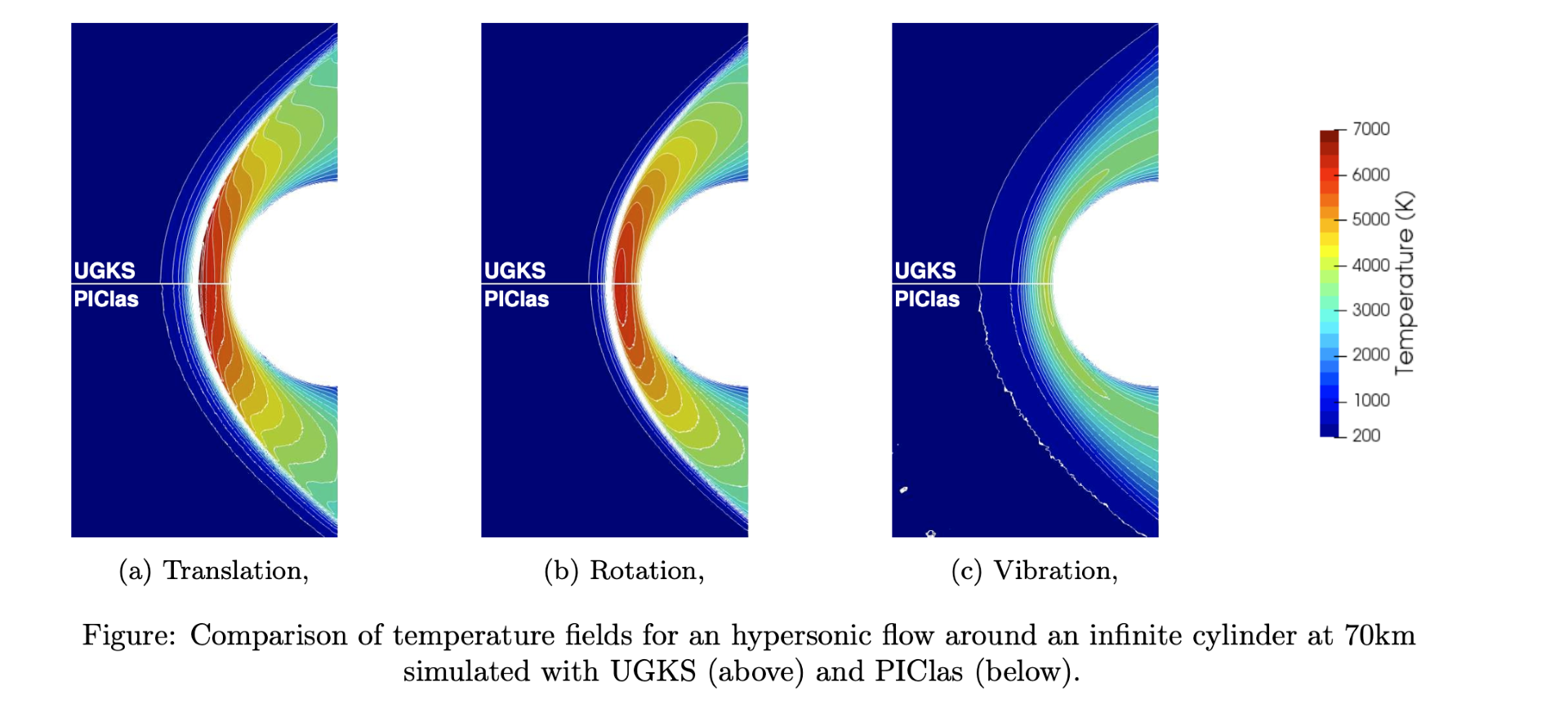 |
Center for Nonlinear Studies |
Since 2010, K. Xu and his team from the Hong Kong University have been developing a framework of unifed gas-kinetic methods encompassing both deterministic (UGKS) and hybrid stochastic-determinitic solvers (UGKP, UGKWP). These methods enable accurate resolutions across the full spectrum of flow regimes with a computational cost that remains essentially independent of gas rarefaction, as their numerical diffusion is well controlled. Notably, they asymptotically reduce to either Navier–Stokes or free-molecular flow solvers, depending on the flow regime. This makes them particularly suitable for multi-scale and multi-regime problems, such as atmospheric re-entry flows. Their effectiveness in handling complex flows has been mainly demonstrated using Shakhov or Rykov models. However, these models suffer from mathematical shortcomings, notably because they do not guarantee a positive mass distribution and the fulfillment of the H theorem. In contrast, ES-BGK models do not suffer from these drawbacks and have recently been extended to describe diatomic gases with rotational and vibrational energy modes. Here, an extension of this framework to ES-BGK models is presented. Particular attention will be given to validating this adaptation through numerical comparisons with established reference codes from the literature, such as SPARTA for non-vibrating gas flows and PIClas for other cases, like in the figure below. This is joint work with Luc Mieussens (Bordeaux) and Céline Baranger (CEA).

Host: Jeff Haack (CAI-2)